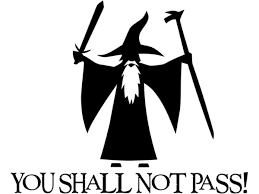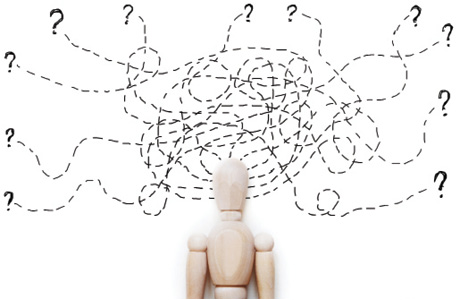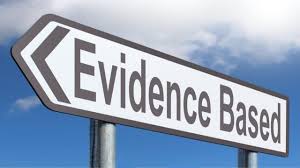Federal Rule of Evidence 702 states:
“If scientific, technical, or other specialized knowledge will assist the trier of fact to understand the evidence or to determine a fact in issue, a witness qualified as an expert by knowledge, skill, experience, training, or education, may testify thereto in the form of an opinion or otherwise.”[1]
At PsychLaw.net we remember that because it carries such an “aura of infallibility,” [2] scientific testimony can create difficult problems for our courts. Summarizing the literature, one respected commentator has written:
“[t]here is virtual unanimity among courts and commentators that evidence perceived by jurors to be ‘scientific’ in nature will have particularly, persuasive effect.” [3]
Just who is an expert? Professor Margaret Berger, Associate Dean and Professor of Law at Brooklyn School of Law, recommends a “Two-Pronged Test”:[4]
“To ascertain whether a proposed expert is qualified to act as a witness, a court must undertake a two-step inquiry:
- The court should determine whether the proffered expert has minimal educational or experiential qualifications in a field that is relevant to a subject which will assist the trier of fact.
- If the expert passes this threshold test, the court should further compare the expert’s area of expertise with the particular opinion the expert seeks to offer. The expert should be permitted to testify only if the expert’s particular expertise, however acquired, enables the expert to give an opinion that is capable of assisting the trier of fact.” Ibid.
Despite erudite descriptions such as Professor Berger’s, others have observed: “In practice, an expert is whoever the court wants to recognize.”[5] This “practice” has found our courts admitting some exceedingly questionable expert testimony. For example, In re Estate of Hoover, 615 N.E.2d 736 (Ill. 1993) affirmed the right of litigants to offer a psychiatric witnesses to give an opinion on the issue of undue influence and competency to testify at trial. Because the psychiatrist never examined the decedent, his testimony relied on a “psychiatric autopsies”. In doing so, he never saw the patient about whom he expressed opinions.
Indeed, a number of courts have upheld litigant’s rights to have people skilled in social science measurement testify. Some courts have allowed testimony regarding consumer preferences or habits. Experts in these cases have relied on survey evidence, testifying on subjects as arcane as product confusion.[6]
Unfortunately, we at PsychLaw.net realize the qualifications of an expert has rarely been an issue on appeal.[7]
Perhaps some of these alarming circumstances built the tide that came ashore as Daubert and Kuhmo Tire. Since these notable cases, a number of courts have begun to draw a line. One important opinion came out of New Hampshire. In Hoffinan LaRoche, Inc., 907 F. Supp. 33 (D.N.H. 1995), the federal district judge held that the mere fact that a scientific expert testifies that a scientific fact is generally accepted is insufficient, in and of itself, to establish that conclusion. As a result, we at PsychLaw.net recommend the following issues for consideration when reviewing the status of a proposed expert.
Treating Therapist vs. Expert Witness
Given Federal Rule 702, and its state variations, it would seem that an appropriately licensed, or certified, treating therapist would qualify as an expert witness. Treating therapists typically have considerable contact with their patients; and as a result, appear eminently qualified to express opinions regarding the people they treat. In fact, this is an example of how appearances can deceive. Ultimately a mental health professional’s status as a treating therapist precludes their qualifying as an expert witness.
Therapeutic Alliance vs. Objectivity
We at PsychLaw.net remind the reader that in any legal proceeding, an expert witness is obligated ‑ above all else ‑ to testify in an objective and candid manner. In their relationships with their patients, however, treating therapists value a “therapeutic alliance” more than objectivity and candor.[8] Therapeutic alliances develop over the course of treatment allowing patients to feel that their therapist is genuinely committed to their welfare.[9]
In response to a therapeutic alliance with their therapist, patients feel that the therapist understands them ‑ and their life circumstances ‑ as the patients themselves comprehend those issues. Therapeutic alliances also involve patients regarding their therapist as a warm, nonjudgmental figure.[10] The relevant research clearly demonstrates that a therapeutic alliance is a necessary condition for effective treatment.[11] Without a therapeutic alliance prevailing between therapist and patient, treatment will fail.[12] In 1992, the first author pointed out the inevitable conflicts between the roles of treating therapist and expert witness (or evaluator).
“Ultimately, therapists find it difficult to competently evaluate their clients ‑ a therapeutic alliance between client and therapist inevitably reduces the therapist’s objectivity. Conversely, evaluators find it difficult to respond therapeutically to the subjects of their evaluations ‑ neutrality and objectivity mitigate against therapeutic alliances. As a result, it is the rare therapist who can respond simultaneously and effectively to both therapeutic and evaluative responsibilities. Psychologists who ignore these limitations can find themselves trapped in the ethical pitfalls of dual relationships.”[13]
_________________________________________________________________________________________—
[1]. Melton, G.B., Petrial, J., Poythress, N.G. & Slobogin, C. (1997). Psychological evaluations for the courts – 2nd Ed. New York: Guilford Press (p.16).
[2]. The “Aura of scientific infallibility@ quotation is from Paul C. Giannelli, The Admissibility of Novel Scientific Evidence: Frye v. United States. a Half-Century Later, 80 Colum. L Rev. 1197, 1237 (1980).
See also: Barefoot v. Estelle, 463 U.S. 880, 926 (1983) (Blackmun, J., dissenting); United States v. Anderson, 851 F.2d 384, 393 (D.C. Cir. 1988), cert denied, 488 U.S. 1012 (1989) (prejudicial impact of expert testimony offered against the accused); United States v. Amaral, 488 F.2d 1148, 1152 (9th Cir. 1973) (prejudicial impact of expert testimony offered by criminal defendant in support of a defense).
See also:
Giannelli, Paul C. (1993) AJunk Science@: The Criminal Cases, 84 J. Crim. L & Criminology 105,122-23 (concludes that “[w]ithout an effective right to defense experts, the accused often lacks the resources to combat junk science”).
See also:
Vidmar, N.J. & Schuller, R. A. (1989). Juries and Expert Evidence: Social Framework Testimony, LAW & CONTEMP. PROBS., Autumn, at 133, 166 And see: e.g., Commonwealth v. Garcia, 588 A.2d 951, 955 (Pa. Super. Ct. 1991), appeal denied, 604 A.2d 248 (Pa. 1992) (“Jurors are human and may be unduly impressed by an expert, his credentials, and ultimately his opinion, >even though, upon reflection, they would realize that in the particular field under discussion they are as much at home as the expert.’@).
[3]. Strong, John W. (1992). Language and Logic in Expert Testimony Limiting Expert Testimony by Restrictions of Function, Reliability, and Form, 71 OR. L. Rev. 349, 361.
[4]. Berger, M.A. (1994). Evidentiary Framework, In. Reference Manual on Scientific Evidence. New York: Federal Judicial Center. Pg 38-117 (p. 55).
[5]. Englade, K. (1990). Mad Science: When It Comes to Psychological Testimony, Everybody’s an Expert. So Who a Does a Jury Believe?, 32 STUDENT LAW. 31, 33.
[6]. Upjohn Co. v Rachelle Laboratories. Inc., (1981. CA6 Mich) 661 F2d 1105, 1111, 1112 (on the basis of a survey of 40 sales people, market development manager for drug company testified on approximate cost in salesmen’s time of drug recall effort. The trial court emphasized the experience of the witness, expense and effort in survey design, and that expert was available for cross).
[7]. Whitcomb, D. (1992). When The Victim Is a Child 20 (2d Ed. 1992).Washington, D.C.: U.S. Dep’t of Justice.
[8]. Horvath, A.O. & Lubrorsky, L. (1993). The role of the therapeutic alliance in psychotherapy. Journal of Consulting and Clinical Psychology, 61, 561-573.
[9]. Whiston, S.C. & Sexton, T.L. (1993). An overview of psychotherapy outcome research: Implications for practice. Professional Psychology: Research and Practice, 24, 43-51.
[10]. Truax, C.B. & Mithchell, K.K. (1971). Research on certain interpersonal skills in relation to process and outcome. In A.E. Bergin & S.L. Garfield (Eds), Handbook of psychotherapy and behavior change: An empirical analysis. New York: John Wiley.
[11]. Luborsky, L., Crits-Christoph, P., Mintz, J. & Auerbach, A. (1988). Who will benefit from psychotherapy? Predicting therapeutic outcomes. New York: Basic Books.
[12]. Truax, C.B. & Carkhuff, R.R. (1967). Toward effective counseling and psychotherapy. Chicago: Aldine.
[13]. Campbell, T.W. (1992). Psychotherapy with children of divorce: The pitfalls of triangulated relationships. Psychotherapy, 29, 646-652 (p. 651).




